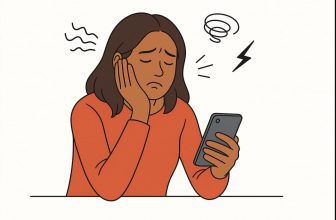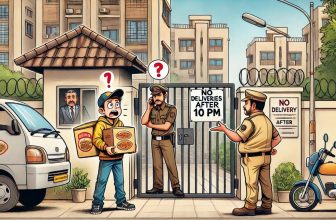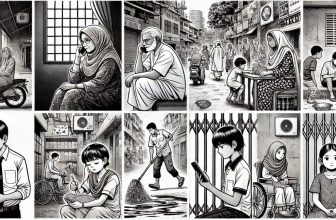You don’t always notice good design when it works—but you feel it. In India’s crowded, fast-growing cities, where every foot of public space is contested, a quiet revolution is underway.
Forget massive flyovers and skyscrapers. The real change is happening at ground level: on footpaths, crossings, waiting areas, and parks. These aren’t just aesthetic upgrades. These design shifts are improving the way millions live, walk, commute, and connect.
Here are 10 smart, human-focused design ideas—already adopted in Indian cities—that are quietly making daily life better.
1. Footpaths That Actually Work (And Include Everyone)
In many Indian cities, footpaths used to be unusable broken tiles, open drains, no ramps. But cities like Chennai (T. Nagar), Pune, and Bhubaneswar are changing that.
What’s Changed:
- Smooth paving with no level difference from shops to walkways
- Tactile paths for visually impaired citizens
- Slopes and railings for wheelchair users and seniors
Impact: A simple walk to the store or school is now safe and dignified for children, elders, and people with disabilities.
2. Raised Pedestrian Crossings That Force Cars to Slow Down
In places like Pune, Indore, and Hyderabad, new raised crosswalks are making drivers slow down and give way to people.
Why It Works:
- Walkers don’t have to step down into traffic
- Acts as a speed breaker for cars
- Makes school zones and market areas much safer
Real Life Benefit: Parents can now cross with their kids without fear. It’s also life-changing for seniors and delivery workers who cross busy roads daily.
3. Tree-Sensitive Sidewalks That Keep Cities Walkable in Summer
Many cities are finally designing around trees instead of cutting them. In Bengaluru, Chennai, and Surat, footpaths now include tree wells, iron grates, or integrated seating around trees.
Why It Matters:
- Walking in summer becomes bearable under shade
- Trees help reduce street temperatures by 3–5°C
- Elderly walkers now have resting spots under natural cover
This is climate resilience built with design, not just policy.
4. Women-Friendly Street Lighting That’s Thoughtful, Not Harsh
LED lights are now placed at human height in parts of Mumbai, Bhubaneswar, and Chandigarh—not just high poles. This reduces shadow pockets where harassment might occur.
Design Details That Matter:
- Soft, even lighting for lanes and seating areas
- No blinding overhead beams
- Motion-sensitive lights near parks
Impact: Women feel safer returning from tuition, jobs, or transit—even after dark.
5. Transit Stops That Respect Your Time and Dignity
BRTS corridors in Surat and the smart bus shelters in Ahmedabad offer not just shade but live route info, phone charging, and dust-free seating.
Real-Life Impact:
- You know when the next bus comes
- You can sit while waiting without roasting in the heat
- More people opt for public transport—especially working-class women and students
6. Multi-Use Public Benches for Daily Rest, Not Just Decoration
Across smaller cities like Panaji, Bhopal, and even parts of Ranchi, modular benches now include:
- Shade structures
- In-built trash bins
- Space for prams, walkers, or sidebags
Result: Street vendors, patients visiting hospitals, or just tired passersby now have clean, dignified spaces to sit. It brings humanity to everyday infrastructure.
7. Low-Tech, High-Impact Wayfinding for Everyone (Including Elders)
In markets and heritage areas like Jaipur, Mysuru, and Kochi, cities are adding large-print, multilingual signage with pictograms, arrows, and walking time indicators.
Design Benefits:
- Helps tourists, senior citizens, and non-English speakers navigate confidently
- Reduces dependence on asking for directions
- Makes city walking more inclusive
8. Shaded, Walkable School Zones Where Children Are the Priority
In parts of Gandhinagar and Chennai, “Safe School Zones” now have:
- Narrowed lanes to reduce car speed
- Colorful sidewalk markings
- Benches and parent-waiting zones
Why It Works: Kids are safer, and parents aren’t forced to park dangerously or crowd gates.
9. Street Edges That Guide, Not Confuse (Thanks to Better Bollards & Paint)
Instead of chaotic curbs and illegal parking, cities like Chandigarh and Surat are adding color-coded curbs and soft bollards to guide traffic and walking zones.
Real Impact:
- Prevents cars from invading footpaths
- Visually defines pedestrian vs vehicle zones
- Makes intersections easier for the elderly and disabled
10. Flexible Public Spaces That Can Transform Hour by Hour
In Shillong, Bhubaneswar, and parts of Mumbai, streets are now being designed for dual use:
- A vehicle road in the morning
- A pedestrian street in the evening with lighting and music
- Weekend markets with pop-up vendors
Why It’s Brilliant: It adapts to the needs of the community throughout the day without permanent infrastructure.
Final Thoughts – 10 Ways Smart Design Is Making Life Easier for Ordinary Indians
Good design in India isn’t about perfection it’s about respect.
Respect for the daily walker.
Respect for the elder using a cane.
Respect for the woman waiting at a bus stop at 9 PM.
Respect for the child going to school.
India’s cities are still chaotic but change is happening. And when design focuses on real people, daily life becomes easier, safer, and more human.





